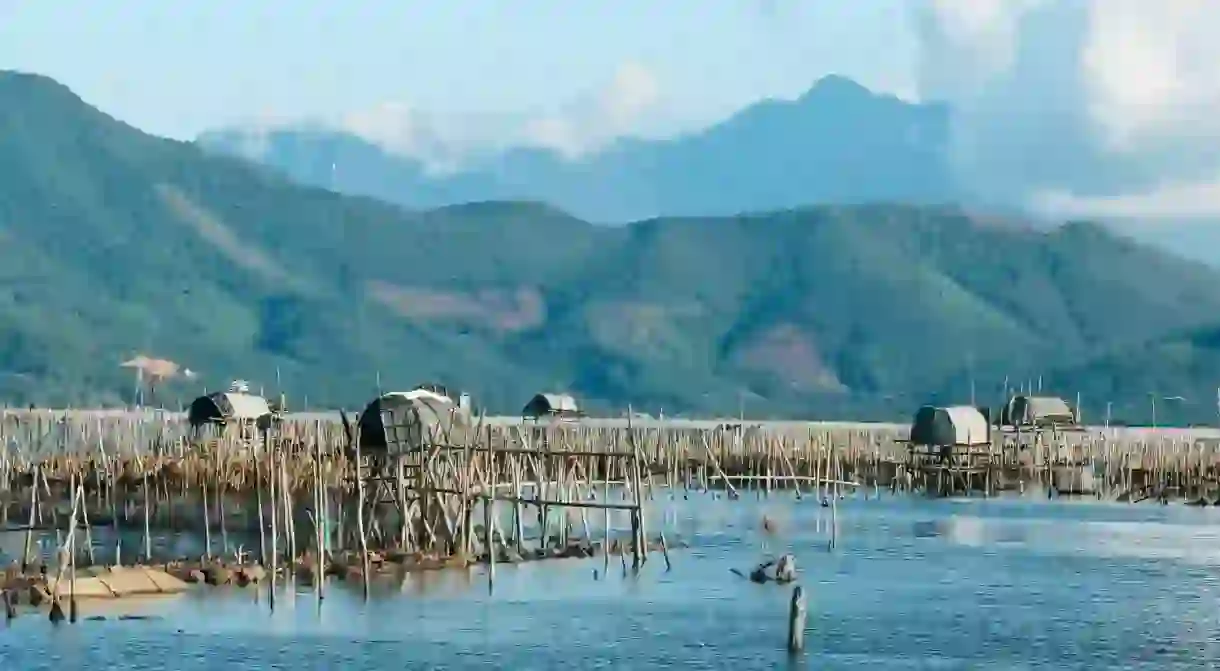20 Breathtaking Photos of Vietnam's Cau Hai Lagoon

Thousands of faded tree trunks poke out of the shallow waters at strange angles. In the distance, mountains forever draped in clouds skirt along the jagged horizon, fading into the sky all the way back to Laos. There’s a wild, almost primitive look to these fishing scenes in the Cau Hai Lagoon, yet it sustains a large and thriving community. The people tending to the nets here — halfway between Da Nang and Hue — live much in the same way as their ancestors did. They’re people who live in harmony with the mountains and the sea.
A town near an inlet
The town is named Vinh Hiền. It’s along the QL49B highway, an offshoot of the main highway linking Hanoi to Ho Chi Minh City. You can see it from across the lagoon as you drive by, but only if you know exactly where to look. It’s often hidden beyond some mist. There’s nothing remarkable about this little town. Tour groups come here to see the lagoon, not Vinh Hiền. This town isn’t meant to be a showpiece for tourists, which is why it has its own kind of beauty.



Thánh Duyên Temple
The Thánh Duyên Temple looks out over the Cau Hai Lagoon from Tuy Van Mount, a meager hill near the Tu Hien inlet to the South China Sea. The original pagoda was built late in the 17th century, but most of the structures were added by later Nguyen Emperors. The buildings honor Buddha and famous monks from the region.




Cau Hai Lagoon
The Cau Hai Lagoon is part of a chain of lagoons stretching along the coast near Hue, which includes the famous Tam Giang Lagoon. It’s one of the largest freshwater lagoon systems in Southeast Asia, fed from rivers coming down off the mountains on the Laos border. Here, rather than trawling, the fishermen (and women) sling their nets off of wooden poles and scoop up their catch.




There are also fish farms in the lagoon, where they raise their catch in rectangular, fenced-off sections. They resemble rice paddies in a way — an aquatic version of thei time-tested farming methods.




The catch
Each haul doesn’t look like a whole lot, but with hundreds of nets and thousands of people working them, these lagoons provide for hundreds of thousands of people. These farming methods aren’t meant to yield huge returns. That would make them unsustainable. If they swept the lagoon with a giant net, they’d lose their way of life — and their grandchildren would as well.



Vinh An beach
Drive a few minutes from the lagoons, and you’ll find almost 25 miles (40 kilometers) of uninterrupted beaches. No resorts, no beachfront villas, nothing — just white sand and an infinite horizon. The mountains, the sea and Vietnam.















